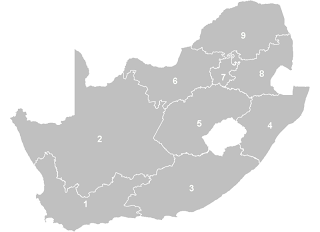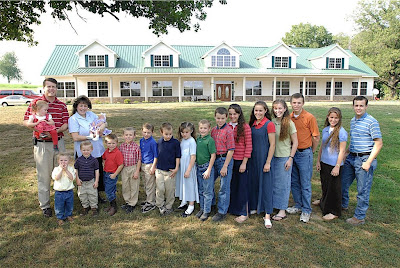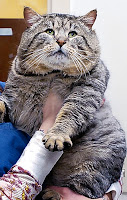Just finished watching Something the Lord Made on HBO. Fantastic cinema folks. Very moving, very inspirational. Please watch it yourself when time permits. It's available on DVD. My words cannot do it justice, so I shall borrow from those of a contributor on the Internet Movie DataBase, as well as selected excerpts from Wikipedia -- GSD
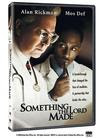
This is absolutely one of the most inspirational movies I've ever seen. The story line was great - The life and times of one of the greatest surgeons the United States has ever produced (Alfred Blalock), played by Alan Rickman, along with his lab assistant Vivien Thomas, played by Mos Def. The acting was superb. If anyone has studied medical history, we are perhaps more familiar with the work of Denton Cooley and William Longmire. Both have spots in this movie, as students of Dr. Blalock. I highly recommend this movie. It is very much a surprise how the lives of these two men - Blalock and Thomas could have been overlooked for so long. Because of their work with "Blue Babies", they both have achieved immortality. The rating of "R" stems only from the sometimes strong (but very real) language.
Vivien Theodore Thomas (
August 29,
1910 –
November 26,
1985) was an
African-American surgical technician who helped develop the procedures used to treat
blue baby syndrome in the 1940s. He was an assistant to
Alfred Blalock at
Vanderbilt University in
Nashville, Tennessee and later at the
Johns Hopkins University in
Baltimore, Maryland. Without any education past high school, Thomas rose above
poverty and
racism to become a
cardiac surgery pioneer and a teacher to many of the country's most prominent surgeons.
Vivien Thomas was born close to Lake Providence, Louisiana. The son of a carpenter, he 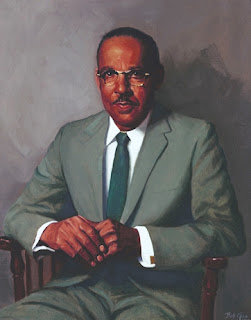 attended Pearl High School (now known as Martin Luther King Magnet High School for Health Science and Engineering) in Nashville, Tennessee in the 1920s. Even though it was part of a racially segregated system, the school provided him with a high-quality education. Later, when Thomas' savings were wiped out, he abandoned entirely his plans for college and medical school, relieved to have even a low-salary job as the Great Depression deepened.
attended Pearl High School (now known as Martin Luther King Magnet High School for Health Science and Engineering) in Nashville, Tennessee in the 1920s. Even though it was part of a racially segregated system, the school provided him with a high-quality education. Later, when Thomas' savings were wiped out, he abandoned entirely his plans for college and medical school, relieved to have even a low-salary job as the Great Depression deepened.
Thomas showed an extraordinary aptitude for surgery and precise experimentation, which led Blalock to grant to him the privilege of more freedom in the execution of the protocols. Tutored in anatomy and physiology by Blalock and his young research fellow, Dr. Joseph Beard, Thomas rapidly mastered complex surgical techniques and research methodology. He and Blalock developed great respect for one another, forging such a close working relationship that they came to operate almost as a single mind. Outside the lab environment, however, they maintained the social distance dictated by the mores of the times. In an era when institutional racism was the norm, Thomas was classified, and paid, as a janitor, despite the fact that by the mid 1930s he was doing the work of a postdoctoral researcher in Blalock's lab.
Alfred Blalock (April 5, 1899 – September 15, 1964) was a 20th century American innovator in the field of medical science most noted for his research on the medical condition of shock and the development of the Blalock-Taussig Shunt, surgical relief of the cyanosis from Tetralogy of Fallot--known commonly as the blue baby syndrome--with his assistant Vivien Thomas and pediatric cardiologist Helen Taussig.
Born in Culloden, Georgia, Blalock entered Georgia Military Academy, a preparatory school for the University of Georgia,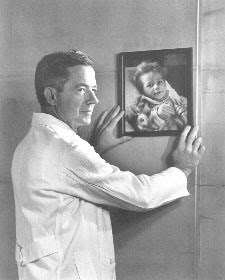 at the age of 14. Having graduated from the University of Georgia with an A.B. in 1918 at the age of 19, Blalock subsequently entered Johns Hopkins Medical School, where he roomed with, became tennis doubles partner to, and began a lifetime friendship with Tinsley Harrison. Blalock earned his medical degree at Johns Hopkins in 1922. Hoping to gain appointment to a surgical residency at Johns Hopkins due to his admiration of William S. Halsted, Blalock remained in Baltimore over the next three years, completing an internship in urology, one year of an assistant residency on the general surgical service (his contract was not renewed), and an externship in ENT. He moved to Boston, Massachusetts in the summer of 1925 to begin a surgical residency at the Peter Bent Brigham Hospital, but left for Vanderbilt "without ever unpacking [his] trunk."
at the age of 14. Having graduated from the University of Georgia with an A.B. in 1918 at the age of 19, Blalock subsequently entered Johns Hopkins Medical School, where he roomed with, became tennis doubles partner to, and began a lifetime friendship with Tinsley Harrison. Blalock earned his medical degree at Johns Hopkins in 1922. Hoping to gain appointment to a surgical residency at Johns Hopkins due to his admiration of William S. Halsted, Blalock remained in Baltimore over the next three years, completing an internship in urology, one year of an assistant residency on the general surgical service (his contract was not renewed), and an externship in ENT. He moved to Boston, Massachusetts in the summer of 1925 to begin a surgical residency at the Peter Bent Brigham Hospital, but left for Vanderbilt "without ever unpacking [his] trunk."
In July 1925, Blalock joined his good friend Harrison at Vanderbilt University in Nashville to serve as first chief resident in surgery under Barney Brooks, who was Vanderbilt University Hospital's first Professor of Surgery and Chief of the Surgical Service. Blalock was active in teaching third and fourth year medical students, and as a result was placed in charge of the surgical research laboratory. While at Vanderbilt University he worked on the nature and treatment of hemorrhagic and traumatic shock. Experimenting on dogs, he found that surgical shock resulted from the loss of blood, and he encouraged the use of blood plasma or whole blood products as treatment following the onset of shock. This research resulted in the saving of many lives during World War II. Unfortunately, Blalock met with frequent bouts of tuberculosis during his Vanderbilt years. His first paper on shock, published in 1927, was actually written by his friend Harrison based on the data that Blalock had completed but could not compile due to his illness. While at Vanderbilt in 1938, Blalock attempted to produce pulmonary hypertension in experiments joining the left subclavian artery to the left pulmonary artery. Although these experiments failed in their purpose, he returned to this idea years later.
When Blalock was offered Chief of Surgery at
Johns Hopkins Hospital in 1941, he requested that his assistant,
Vivien Thomas, come along with him. They formed a very close relationship that would last more than 30 years. Together they developed a shunt technique to bypass
aortic coarctation. While they were working on this,
Helen Taussig presented him with the problem of the blue baby syndrome.
In the normal
heart, there are four separate chambers; the two top chambers are known as atria and pump blood simultaneously into the two bottom chambers, or
ventricles. Blood first enters the heart at the right atrium, which then empties blood into the right ventricle, which pumps the blood into the lungs through the pulmonary artery to get oxygen. From the lungs, the blood enters the left atrium through the pulmonary vein; the left atrium empties into the left ventricle, which pumps the blood into the aorta and from there reaches the rest of the body. Because it is responsible for getting blood to the entire body through the aorta, the left ventricle is usually the biggest and strongest chamber of the heart.
All very fascinating indeed, I encourage you to read more by visiting your local library or searching the Internet. -- GSD
